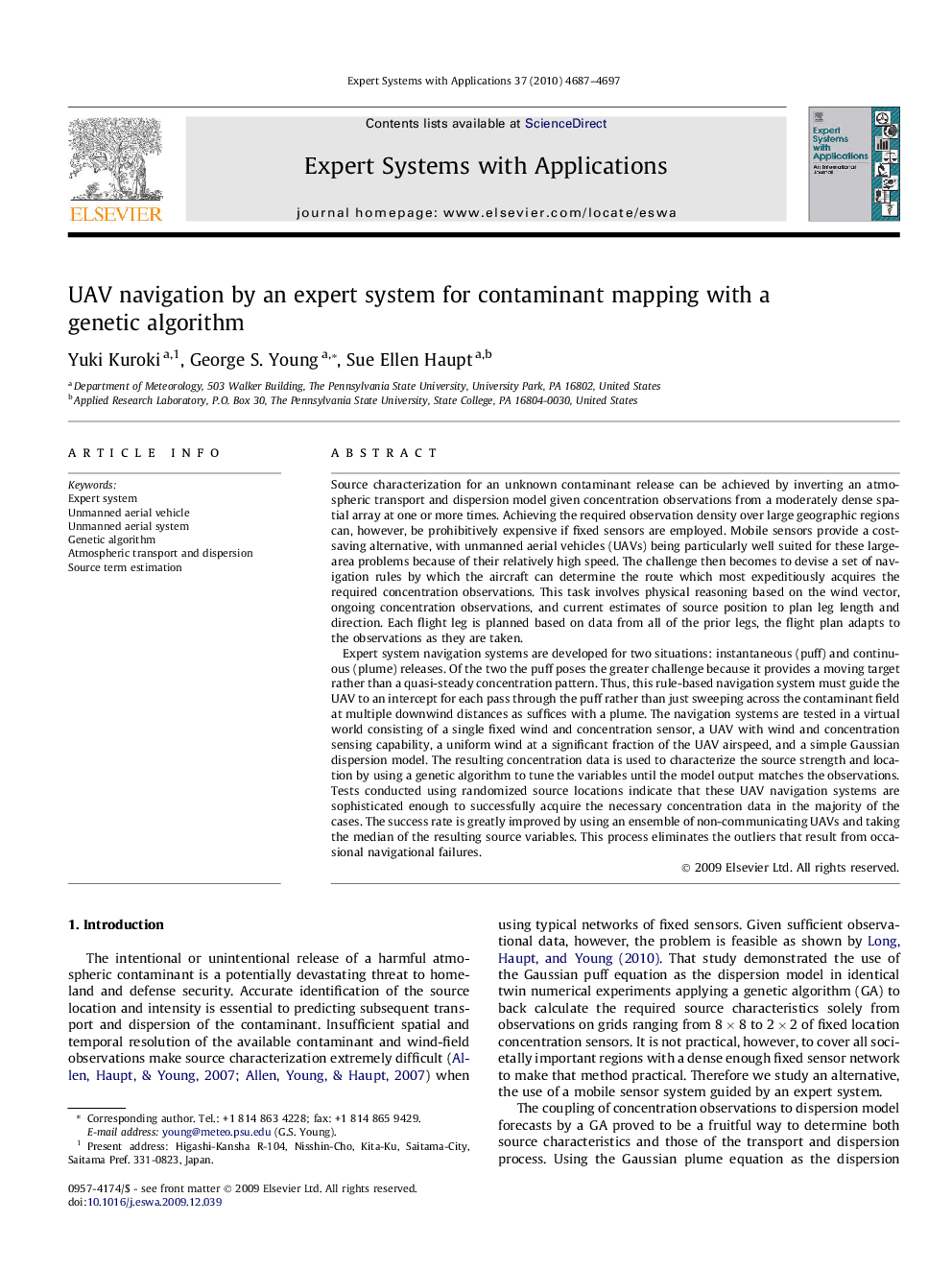| کد مقاله | کد نشریه | سال انتشار | مقاله انگلیسی | نسخه تمام متن |
|---|---|---|---|---|
| 386759 | 660890 | 2010 | 11 صفحه PDF | دانلود رایگان |

Source characterization for an unknown contaminant release can be achieved by inverting an atmospheric transport and dispersion model given concentration observations from a moderately dense spatial array at one or more times. Achieving the required observation density over large geographic regions can, however, be prohibitively expensive if fixed sensors are employed. Mobile sensors provide a cost-saving alternative, with unmanned aerial vehicles (UAVs) being particularly well suited for these large-area problems because of their relatively high speed. The challenge then becomes to devise a set of navigation rules by which the aircraft can determine the route which most expeditiously acquires the required concentration observations. This task involves physical reasoning based on the wind vector, ongoing concentration observations, and current estimates of source position to plan leg length and direction. Each flight leg is planned based on data from all of the prior legs, the flight plan adapts to the observations as they are taken.Expert system navigation systems are developed for two situations: instantaneous (puff) and continuous (plume) releases. Of the two the puff poses the greater challenge because it provides a moving target rather than a quasi-steady concentration pattern. Thus, this rule-based navigation system must guide the UAV to an intercept for each pass through the puff rather than just sweeping across the contaminant field at multiple downwind distances as suffices with a plume. The navigation systems are tested in a virtual world consisting of a single fixed wind and concentration sensor, a UAV with wind and concentration sensing capability, a uniform wind at a significant fraction of the UAV airspeed, and a simple Gaussian dispersion model. The resulting concentration data is used to characterize the source strength and location by using a genetic algorithm to tune the variables until the model output matches the observations. Tests conducted using randomized source locations indicate that these UAV navigation systems are sophisticated enough to successfully acquire the necessary concentration data in the majority of the cases. The success rate is greatly improved by using an ensemble of non-communicating UAVs and taking the median of the resulting source variables. This process eliminates the outliers that result from occasional navigational failures.
Journal: Expert Systems with Applications - Volume 37, Issue 6, June 2010, Pages 4687–4697